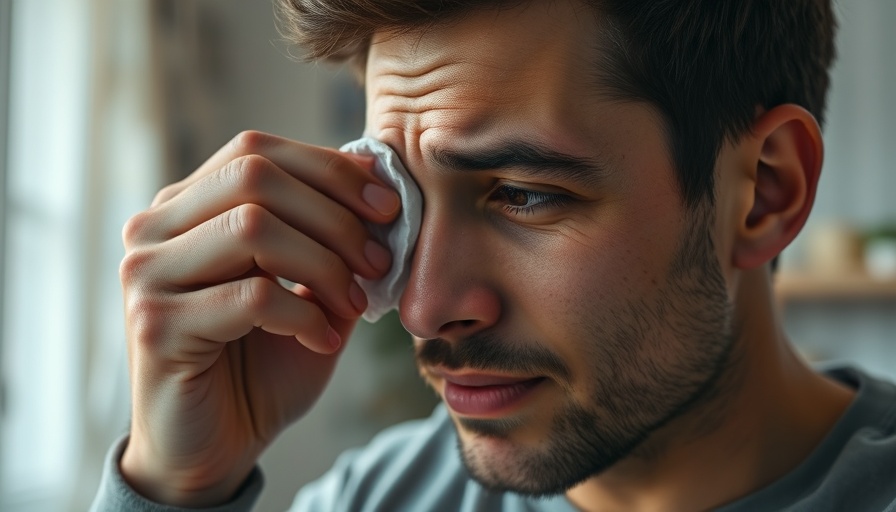
Recognizing a Stye: What You Need to Know
Have you ever discovered a painful, swollen bump on your eyelid just before an important event? You might be dealing with a condition known as a stye, or medically termed a hordeolum. This common condition occurs due to the infection of the glands on your eyelid, typically caused by the bacteria Staphylococcus aureus, which naturally resides on our skin. Recognizing this can be significant because styes can be both irritating and unsightly, often surfacing at the most inopportune times, like before job interviews or big social gatherings. Understanding how to treat a stye at home effectively can help alleviate discomfort and enhance your confidence.
In 'How to Treat a Stye at Home & When to See a Doctor', the discussion dives into effective treatments for eyelid styes, exploring key insights that sparked deeper analysis on our end.
The Importance of At-Home Care
When it comes to treating a stye, one of the most recommended methods is the warm compress. Applying heat can promote blood flow to the area, helping to reduce swelling and facilitate healing. While it might seem counterintuitive (the swelling could initially worsen), this treatment is beneficial and often yields results within a few days.
To make a warm compress, you can use a commercially available warm compress mask, which is simple to use and quite effective. Simply heat it in the microwave for 20-30 seconds and place it on your eyelid for 5-15 minutes, around four times a day. Additionally, eyelid scrubs can complement this treatment by eliminating bacteria and dead skin, reducing the risk of future occurrences. Regular cleaning, especially if you wear makeup or contact lenses, is vital in maintaining eyelid health.
When Home Remedies Aren't Enough
Although most styes are self-limiting and may resolve on their own within one to three weeks, there are instances where a visit to the doctor becomes necessary. If you notice persistent pain, changes in vision, or increased redness, it's crucial to consult a healthcare professional. Sometimes, chronic or severe cases may require antibiotics or other medical interventions, including incision and drainage procedures for stubborn styes.
Importantly, antibiotics haven't proved significantly more effective in treating styes than at-home self-care options. A recent 2022 study found little difference in outcomes between antibiotic usage and conservative care, suggesting that along with warm compresses, optimal eyelid hygiene can often be sufficient.
The Role of Eyelid Hygiene in Stye Prevention
Achieving good eyelid hygiene is your frontline defense against styes. Regularly cleansing your eyelids can help keep the oil and sweat glands free of blockages and significantly lower the risk of infection. Eye cleaning foams or wipes infused with tea tree oil – beneficial in combating pesky Demodex mites found on eyelashes – can be great add-ons to your eyelid care regimen.
What Happens If You Don’t Treat a Stye?
Ignoring a stye may not seem like a big deal, but serious complications like pre-orbital cellulitis or orbital cellulitis can arise if the infection spreads. These conditions can lead to vision-threatening complications or severe discomfort, making timely treatment crucial. If a stye does not improve after a few days or continues to recur, don't hesitate to reach out to an eye care professional for a thorough evaluation and management options.
Take Control of Your Eyelid Health
Styes can be a nuisance, but knowing how to manage them effectively is key. Utilizing warm compresses and maintaining proper eyelid hygiene can help you tackle these bumps confidently. Stay mindful of any symptoms that require professional help, and don't let a stye sabotage your important moments!
For more insights into effective eyelid care and maintaining your eye health, consider signing up for updates from our wellness blog. Take proactive steps towards a healthier lifestyle today!
 Add Row
Add Row  Add
Add 




Write A Comment